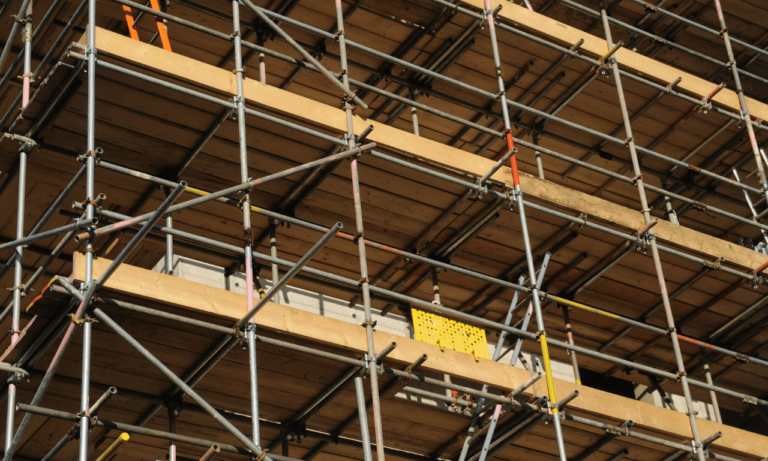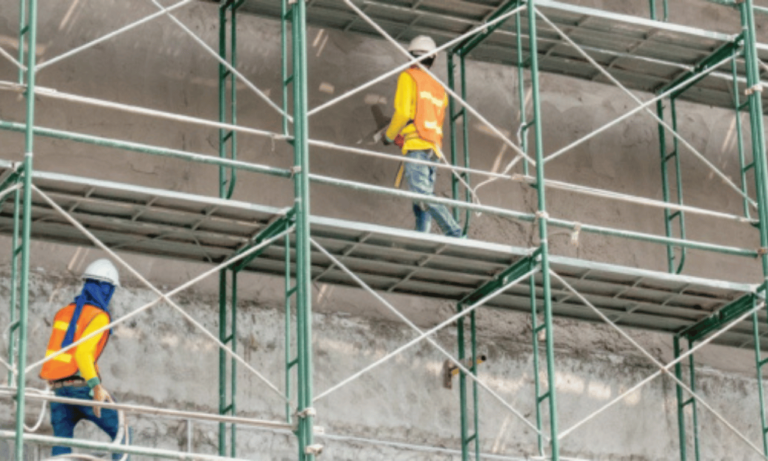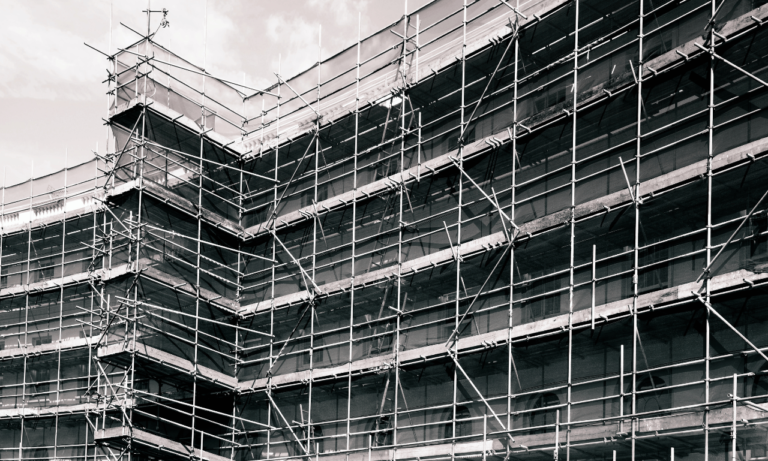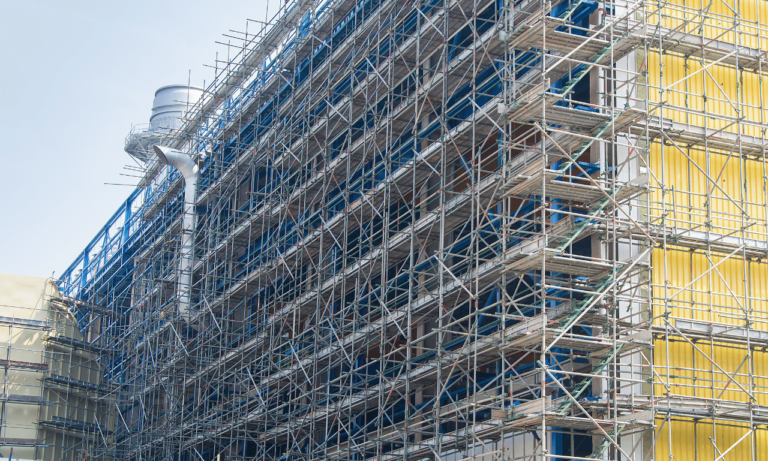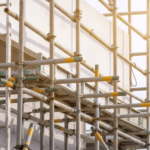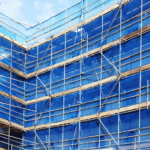Phone:
(+65)8319-0742
The integrity of a completed structure is often attributed to the visible components that one admires upon its culmination. However, beneath the veneer of architectural finesse lies the bedrock of construction ingenuity: falsework systems. These temporary support structures are not merely ancillary, but the unequivocal cradles of potential, bearing the weight of wet concrete with unwavering resolve. In the intricate dance of construction, construction falsework partners with stability and precision, vouchsafed by the adept hands of shoring services. A systematic choreography of steel and wood tempers the untried mix to form with assuredness, birthing the envisioned edifices with such grace that belies the complexity underneath.
Comprehending the vitality of falsework solutions in construction is to understand the gravity of an unspoken covenant between concept and creation. This covenant, a silent assertion of safety and efficacy, is the construction industry’s tacit promise to both its workforce and the society that shelters beneath the structures it erects.
Key Takeaways
- Falsework systems serve as critical temporary molds during concrete curing.
- Shoring services play an integral role in providing reliable temporary support structures.
- The accuracy of falsework solutions is imperative to ensure construction safety and stability.
- Construction falsework must be carefully designed to bear the weight until the concrete is self-supporting.
- Falsework is a temporary yet essential aspect of creating lasting and safe structures.
- Every aspect from the materials to the design of falsework systems must cater to the specific needs of the project.
Understanding Falsework and Its Critical Role in Construction
The discipline of falsework engineering is a cornerstone in modern construction, involving the intricate design and implementation of temporary support structures. Every falsework contractor must ensure that these supports are robust enough to handle the immense weight of wet concrete, and yet, be removable without impairing the integrity of the newly formed structure. As such, the ability to develop a sound falsework design is paramount for the safety and efficiency of construction projects.
Encompassing more than mere temporary constructs, falsework is an essential player in shaping infrastructural development. Its role becomes particularly evident in projects characterized by high-risk activities, such as towering skyscrapers or expansive bridges. Here, the engineering prowess of falsework contractors is on full display as they integrate complex structures to manage heavy loads, sustain balance, and ensure worker safety.
Furthermore, the aspect of falsework design takes center stage when determining the success of a structure’s formative stages. A well-executed design not only supports but also aligns with the desired outcome of the architectural vision. It’s a blend of functionality, innovation, and, above all, reliability.
| Falsework Component | Function | Importance in Construction |
|---|---|---|
| Foundations & Footings | Support the base of falsework frames | Provide stability and load distribution |
| Frames | Define the shape of the structure | Offer the primary support for wet concrete |
| Bracing | Maintain the structural integrity | Counteract lateral forces during concrete setting |
The engagement of a proficient falsework contractor is consequently a matter of necessity, not choice. Rigorous assessments of safety risks and methodical planning ought to be conducted to mitigate any potential hazards during the demanding construction process. By fulfilling these strict criteria, the falsework engineering field demonstrates its indispensable role in building enduring and safe structures worldwide.
Key Elements of Designing Effective Falsework Systems

When constructing sound falsework systems, understanding and applying certain core principles are vital to the success and safety of formwork construction. From selecting durable falsework materials to ensuring the infrastructure is compliant with regulatory standards, each step is a pivotal component in the architectural integrity of temporary work platforms.
Importance of Rigidity and Bracing
The strength and stability of a falsework system hinge on its rigidity and the bracing provided within its design. A dependable falsework design integrates sufficient bracing to prevent lateral movement, ensuring the structure maintains its integrity against the dynamic loads applied during the concrete pour stage.
Ensuring Watertightness and Easy Removal
Choosing correct falsework materials also demands attention to their watertight properties, crucial for preventing leakage and ensuring the structural quality of the concrete. Additionally, the design must permit easy removal of supports without causing damage to the newly formed structures, which is essential for efficient progression to subsequent stages of construction.
Collaboration with Experienced Formwork Designers
Integrating expertise from seasoned formwork designers is essential in aligning falsework design with construction complexities. It’s a collaborative effort that ensures that the temporary work platforms can bear additional loads and that pour rates are meticulously calculated.
Compliance with Technical Standards and Regulatory Requirements
Regulatory compliance is not a footnote but a cornerstone of falsework design. It ensures that all implemented systems are within the boundaries of safety and technical specifications, avoiding costly errors and potential hazards on site.
| Falsework Component | Material Considerations | Design Significance |
|---|---|---|
| Support Beams and Columns | Durable metals or high-quality timber | Structural support and load distribution |
| Bracing | Steel rods or diagonal timbers | Enhanced stability against lateral forces |
| Decking Surface | Plywood or composite panels | Formwork base for concrete pour |
| Sheathing | Water-resistant materials | Creating a watertight mold for concrete |
Falsework: The Backbone of Temporary Support Structures

The pivotal role of falsework contractors extends beyond mere installation; it involves a comprehensive understanding of how falsework materials and temporary support structures synergize to facilitate the curing of concrete. A project’s success hinges on this temporary yet essential framework, which is meticulously calculated and executed to ensure structural integrity. In this intricate orchestration, the falsework is the unsung hero, often unnoticed once the edifice reveals its finalized form. However, its contribution to modern construction cannot be overstated, as it provides the necessary support for concrete until it gains full strength.
The selection of appropriate falsework materials is critical, as they must possess the resilience to endure the variety of stresses imparted during the construction process. Factors such as environmental elements, load distribution, and the unique dynamics of the construction site play a significant role in material choice. With safety and durability as the cornerstones of effective falsework, contractors must navigate an array of challenges to align with the project’s demands.
| Consideration | Details |
|---|---|
| Load Capacities | Determination of maximum loads falsework must support, including concrete, workers, and equipment weight |
| Material Durability | Assessment of falsework materials’ resistance to environmental factors and construction loads; optimizing for longevity and reusability |
| Bracing Requirements | Strategic bracing to counteract lateral forces and maintain structural stability throughout the curing process |
| Structural Connections | Ensuring secure joints and interfaces between various components of the falsework assembly |
| Environmental Considerations | Adaptation of falsework designs to account for site-specific wind loads, temperature fluctuations, and other environmental impacts |
In conclusion, falsework is an indispensable element in the realm of construction, where engineering precision melds with material science to deliver secure and reliable temporary support structures. The partnership between contractors and engineers is founded on the shared objective of achieving architectural aspirations, culminating in edifices that are as sound as they are splendid.
Adopting the Suitable Falsework Solutions for Diverse Construction Demands
In the dynamic arena of construction, procuring the optimal falsework solutions is quintessential for the diverse array of project requirements encountered by contractors. With the advancements in falsework systems, the choice between using traditional means of construction falsework or transitioning towards modern modular formwork presents a significant decision point for project management strategies. Each form of formwork is designed to adapt to the varying challenges posed by different construction environments, whether traditional plywood formwork constructed on-site or highly efficient, lighter modular systems.
Comparing Traditional and Modular Formwork Systems
The debate between traditional and modular formwork hinges on several factors, including cost-efficiency, adaptability, and installation times. Traditional plywood formwork, historically favored for its familiarity and on-site flexibility, has been challenged by modular formwork that boasts pre-engineering and swift assembly advantages. This drastic contrast in approach necessitates a careful evaluation of the project’s scale, complexity, and timelines. Modular systems have increasingly become the go-to falsework solution for projects requiring rapid construction times without compromising safety or quality.
Implementation of Wall and Column Forms
When implementing wall and column forms, construction teams must rigorously enforce stability protocols. These forms must endure the forces of wet concrete, wind loads, and any unforeseeable impacts. The integrity of falsework materials employed in these forms is critical, for it ensures the security of the structure and the safety of the construction workers. Choosing the right material, which reconciles strength with efficiency, is a key factor in the successful implementation of wall and column forms within the overall construction falsework framework.
Safety in Suspended Slabs Formwork
Particularly challenging is the erection of suspended slabs formwork. The elevation of the working platform necessitates heightened safety measures, including but not limited to secure scaffolding, guardrails, and fall-protection systems. Ensuring the safety of the workforce that operates at considerable heights requires ongoing vigilance, intensive training, and strictly adhered to safety protocols. Furthermore, the incorporation of high-quality materials and comprehensive training is non-negotiableâtheir synergy forms the foundation of a successful and safely executed project.
Quality Materials and Training: Pillars of Successful Falsework
The pillars that uphold the domain of falsework are undeniably the superior quality of materials and the extensive training provided to personnel. It is through this commitment to excellence in both aspects that contracting firms can guarantee a solid foundation for every project. From the selection of reliable falsework solutions to delivering comprehensive training to workers handling traditional and modular formwork, these elements coalesce to establish a project’s safety, durability, and structural integrity.
FAQ
What are falsework systems in construction?
Falsework systems are temporary support structures used in construction to hold wet concrete in place as it hardens and gains strength to support itself. These include the foundational frameworks, shoring services, and bracing components that are vital during the creation of concrete structures.
How critical is falsework engineering in the construction process?
Falsework engineering is extremely critical as it ensures the safety and efficiency of construction projects. An expert falsework contractor is responsible for designing and implementing falsework systems that can support the weight and stresses of developing structures and accommodate workers and machinery safely.
What considerations are essential in designing falsework systems?
Designing falsework systems requires thorough planning to ensure rigidity and bracing to withstand concrete loads, watertightness to prevent leaks, easy removal without damaging the concrete, and compliance with technical and regulatory standards for safe and efficient construction.
Why is collaboration with experienced formwork designers important?
Collaboration with skilled formwork designers is critical because it brings specialized expertise into the planning phase, which is necessary for calculating load capacities, bracing requirements, and accommodating safety measures within falsework design. Their expertise enables falsework to meet the precise demands of various construction methodologies.
How do you choose the right falsework materials for a project?
Choosing the right falsework materials involves considering their strength, durability, and adaptability to environmental conditions such as wind loads. Materials must also be compatible with the specific construction method and should facilitate the protection of workers as well as the integrity of the concrete as it cures.
What is the difference between traditional and modular formwork systems?
Traditional formwork systems are often built on-site using materials like plywood and timber, whereas modular formwork systems are prefabricated and consist of lightweight and reusable components. The choice between them depends on project requirements such as complexity, budget, and the need for efficiency.
What safety measures should be considered in suspended slab formwork?
In suspended slab formwork, it is essential to ensure that the falsework can handle the anticipated loads and provide stability against environmental factors such as wind. Additional safety measures include securing the working platform, fall protection systems, and ensuring workers are well-trained for work at height.
Why are quality materials and training considered the pillars of successful falsework?
Quality materials guarantee that falsework structures can safely support the load demands of construction projects. Meanwhile, thorough training ensures that workers understand how to erect and dismantle these temporary structures properly, maintain safety on the construction site, and effectively deal with any issues that might arise during the construction process.


